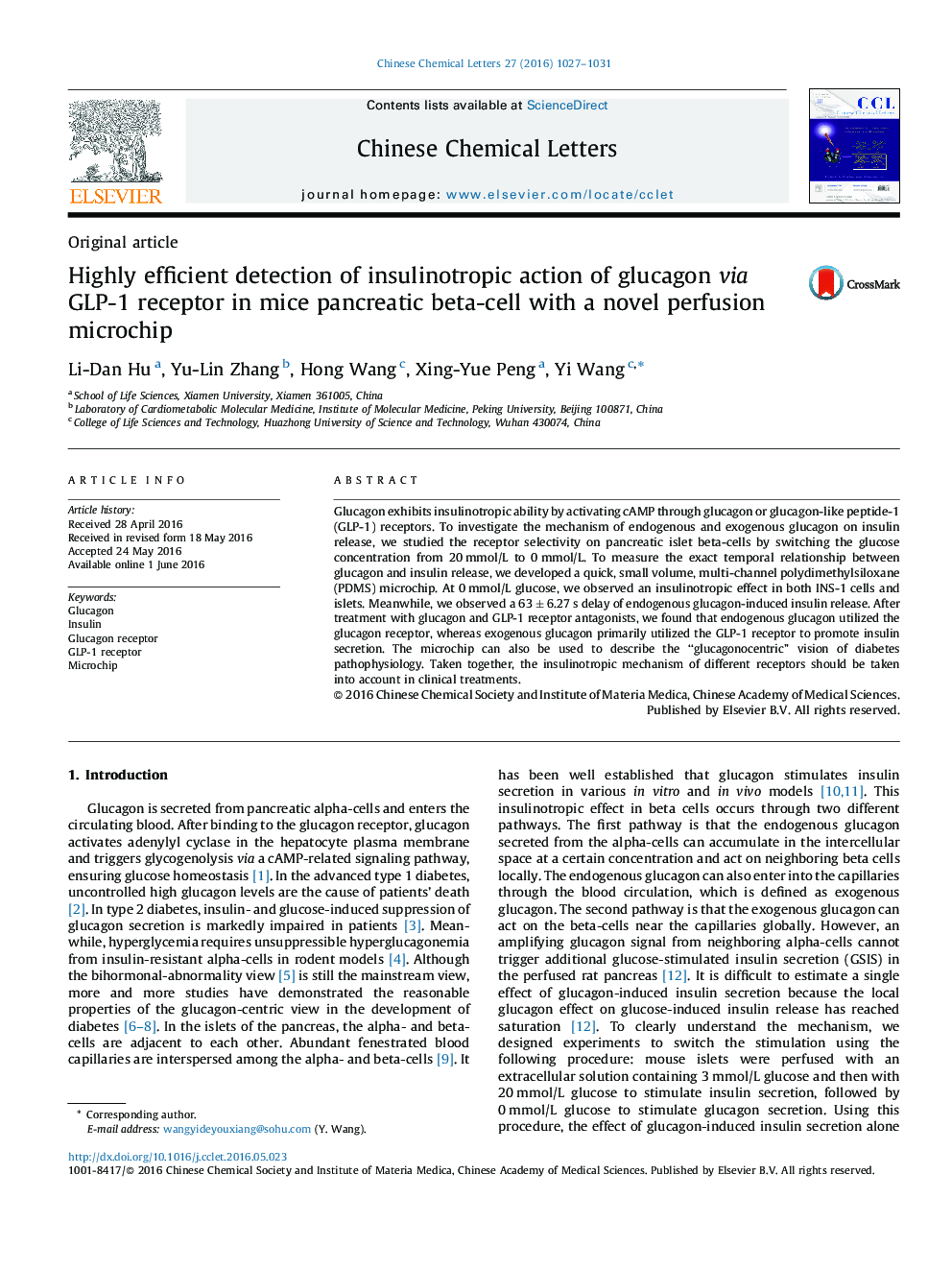| Article ID | Journal | Published Year | Pages | File Type |
|---|---|---|---|---|
| 1254359 | Chinese Chemical Letters | 2016 | 5 Pages |
Glucagon exhibits insulinotropic ability by activating cAMP through glucagon or glucagon-like peptide-1 (GLP-1) receptors. To investigate the mechanism of endogenous and exogenous glucagon on insulin release, we studied the receptor selectivity on pancreatic islet beta-cells by switching the glucose concentration from 20 mmol/L to 0 mmol/L. To measure the exact temporal relationship between glucagon and insulin release, we developed a quick, small volume, multi-channel polydimethylsiloxane (PDMS) microchip. At 0 mmol/L glucose, we observed an insulinotropic effect in both INS-1 cells and islets. Meanwhile, we observed a 63 ± 6.27 s delay of endogenous glucagon-induced insulin release. After treatment with glucagon and GLP-1 receptor antagonists, we found that endogenous glucagon utilized the glucagon receptor, whereas exogenous glucagon primarily utilized the GLP-1 receptor to promote insulin secretion. The microchip can also be used to describe the “glucagonocentric” vision of diabetes pathophysiology. Taken together, the insulinotropic mechanism of different receptors should be taken into account in clinical treatments.
Graphical abstractEndogenous and exogenous glucagon utilized different receptors to promote insulin secretion.Figure optionsDownload full-size imageDownload as PowerPoint slide
